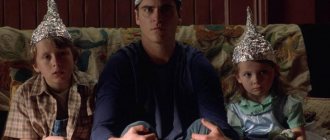- Emotional and behavioral disorder
Behavioral disorders can occur in connection with a variety of mental disorders. However, not every illness is capable of causing serious changes in behavior or an inadequate vision of the world. A number of disorders do not develop at the psychotic level, and therefore do not cause impairment of intellectual activity and retain the ability to care for oneself independently.
Conduct disorder in children
A distinctive feature of conduct disorder in childhood is the inability to control and plan one’s own actions, as well as interact with other people in accordance with accepted norms and rules. Increased aggression, irritability, lack of discipline and desire to obey elders, pugnacity, cruelty, theft appear, and often the child begins to lie.
To establish a diagnosis, specialists carry out a number of psychodiagnostic measures and also talk with the child, drawing up the most competent and complete history. Treatment development is carried out through therapeutic techniques in an individual or group setting.
Types of conduct disorder
An entire classification of behavioral disorders has been created, where each type has its own distinctive characteristics, treatment methods, symptoms and diagnostics.
Mental and behavioral disorders
It is important to note that with the development of a mental disorder, each person will be able to establish this in connection with pronounced symptoms. The most common include: the inability to fully think and engage in intellectual activity, the emotional background is constantly changing, and deviations in behavior from generally accepted norms often appear.
As a rule, a person begins to hear non-existent voices or see unreal objects. Behavioral reactions often appear that were previously unusual for him. Aggression increases, the patient can lose his temper over literally every little thing. The cognitive sphere is also affected: it becomes difficult to read, carry out mental operations, and anxiety, fear, and aggression often appear.
Mixed conduct disorder
Characterized by disturbances in intellectual activity, action and behavior. This diagnosis falls into the category of mental. Their behavior is often regarded as inadequate; the occurrence of the slightest stressful situation is perceived differently. As a result, disagreements in professional activities or family may increasingly arise.
A distinctive feature is the fact that a person cannot recognize the occurrence of a mental disorder, so treatment often begins at an advanced stage.
The main tasks of the specialist are:
- Restoring normal response to external factors
- Teach the patient to interact with others in accordance with social norms
- Do not harm others or yourself.
The disease develops throughout life. Most often it occurs in childhood. During adolescence, personality development continues, so making such a diagnosis is not always correct. With the onset of adulthood, the patient's condition begins to rapidly deteriorate and a mixed type of disorder occurs.
Organic conduct disorder
This is a type of disorder that appears as a result of impaired brain activity, or as a result of the development of mental disorders and other diseases. When a disorder is diagnosed in the brain, the person's behavior automatically changes. This is due to the fact that the brain is responsible for carrying out thought processes and thinking.
Equally important is to establish the age at which the organic disorder began. Adolescence and menopause are the most dangerous, since most often changes are observed in a negative direction.
Among the main causes of the disorder are the following aspects:
- Epilepsy (if its development continues for more than 10 years). A whole range of side symptoms is diagnosed, of which the patient is aware
- Suffering a brain injury. As a rule, an organic disorder manifests itself with severe mechanical damage. This is especially true if the integrity of the skull has been compromised. Serious abnormalities can develop when injured during adolescence
- Excessive consumption of alcoholic beverages, use of psychotropic substances and narcotic drugs
- Autoimmune diseases
- Education of oncological type
- Diseases of the vascular system and circulatory disorders.
Depending on the complexity and development, the disease can manifest itself in completely different ways. Among the most common manifestations are the following aspects:
- The emergence of specific behavioral habits
- A person is unable to control his own will and behavior
- Increasing emotional instability
- Cognitive activity decreases
- The emergence of delusional ideas.
To make a diagnosis, it is important that the symptoms appear continuously. Otherwise, one-time outbreaks do not prove the development of an organic disorder.
Social behavior disorder
A category of disorders characterized by deviant behavior and excessive aggressiveness. Most often develops in childhood or adolescence. As a rule, the disorder at the emotional level manifests itself minimally. Violations do not necessarily manifest themselves in family or work activities. If the disease develops in a schoolchild, the following aspects can be diagnosed:
- The disorder most often manifests itself when interacting in a group
- Delinquency
- Violations of the rights of other group members
- The child may start stealing
- Leaving an educational institution on your own, vagrancy
- Increased excitability.
In differential diagnosis, first of all, control and observation of interactions with other people and peers are established. In addition, diagnosis requires the presence of persistent symptoms for at least six months.
Hyperkinetic behavior disorder
It consists in the appearance of complex behavioral disorders, which manifest themselves in excessive impulsiveness, hyperactivity, and inattention. As a rule, the first signs can appear at an early age. As a result, the child may experience difficulty communicating with other schoolchildren or older children. According to statistics, 5% of the total number of children suffer from this disorder every year and most of them are male.
There are no specific reasons for which this disorder occurs. But it has been established that there is a genetic predisposition and experiences of strong amplitude. Other common factors include:
- Insufficiently balanced diet
- Serious poisoning from heavy chemicals
- Having a serious stressful situation
- Long-term use of medications
- Traumatic brain injuries.
When the disease develops in childhood, there is increased activity, impulsive behavior, and inability to concentrate.
Mixed emotion and behavior disorder
Manifests itself in childhood at an early stage. The main factor is the negative situation in the family, constant scandals, cruel punishments, and insufficient expression of love for the child. The main manifestation is deviant behavior (hooliganism, theft, excessive aggression, rudeness, vagrancy) in young children and teenagers. As a rule, negative relationships are formed with adults who represent power.
Regarding diagnostic measures, we can highlight, first of all, observation. If persistent behavior deviates from accepted norms, a diagnosis of mixed disorder is established.
Socialized conduct disorder
The development of deviant behavior that differs from established norms is called a socialization disorder. Often the first signs are observed during school or adolescence.
The disease appears due to the accumulation of external negative factors, which may include a negative environment at home or in an educational institution. Often a child becomes an outcast and may be bullied by his peers. After a certain period of time, the child experiences a tendency towards hooliganism, gets into fights, and is rude to adults. Often conflicts arise with government officials.
During the diagnostic process, it is important to note the fact that a socialized disorder is diagnosed only if the signs appear over a long period of time (at least 6 months).
Suicidal behavior disorder
Characterized by the desire to cause physical harm to oneself, which will lead to death. The aggression that a person directs at himself has many facets, and therefore is studied separately by specialists.
There are several distinctive features that characterize suicidal disorder:
- To solve a problem, a person tries to kill himself
- Psychological torment and painful experiences act as stimulants. Suicide in this case acts as a quick solution to the problem
- The person ceases to see a way out of the current situation, shows helplessness and hopelessness
- The emergence of a persistent feeling to commit suicide
- How to avoid a greater evil
- The emergence of self-hatred.
If the above signs and symptoms occur, the patient should be referred to a psychologist or psychotherapist to correct the condition. If severe depression develops, specialists may prescribe additional medications.
Deviant behavior disorder
Sustained opposition to social norms, as well as the desire to prove the correctness of one’s own approach to life, is called a deviant disorder. It is most often expressed in antisocial behavior traits.
The manifestation of deviant behavior presupposes the formation of inadequate moral attitudes, rules and foundations. Most often manifests itself in adolescence through the following attitudes and properties:
- Presence of an impulsive reaction
- Inadequate response to external manifestations of the surrounding world
- Behavioral reactions that occur repeatedly
- Manifestation of antisocial behavior in society.
It has been found that the development of such symptoms is shaped by psychological and social factors. Among them are the distinctive features of upbringing, hereditary predisposition, the formation of a negative microclimate in the family, and the use of drugs and alcohol.
When diagnosing this disorder, consultations with a psychologist and behavioral correction work are required.
Hyperkinetic behavior disorder in children
In children, hyperkinetic disorder is most often associated with excessive control by parents or caregivers. However, this is not the only factor that can lead to the persistent development of pathology. The influence is exerted by a certain situation in society (for example, in the classroom or in the family). Among the most pronounced signs it is worth noting:
- Excessive impulsiveness
- Increased activity
- The function of attention is impaired.
Regarding the last point, it is important to note that it is difficult for a child to concentrate in order to fully assimilate the educational material. Often he begins to lose disorientation, unable to organize himself independently; if he starts one thing, he cannot complete it.
Children, as a rule, are fussy, have difficulty withstanding waiting, and are unable to independently adapt to new conditions in society.
Autistic behavior disorder
As a result of autistic disorder, there is a distortion of real events that occur in the environment. A person may also experience difficulties in communicating with other people. Diagnostic measures are carried out through observation and conversation.
If the diagnosis is confirmed, then treatment occurs through a whole range of measures: medications, work with a psychologist, and the development of special training programs.
Unsocialized conduct disorder
Among the main signs is the persistent manifestation of antisocial behavior. Increased aggression and anger often manifest themselves, and there is often a disruption in the process of communication with other people, regardless of age category. Most often it develops in adolescence, when the child tries to show his superiority through hooliganism and fights.
Organic personality and behavior disorder
It manifests itself as a result of brain injuries, which negatively affects the development of personality and behavior. A person is often diagnosed with moral and mental exhaustion, and mental activity gradually decreases. The most acute periods of the disease are the onset of menopause and adolescence.
Disorders of volitional behavior
The distinctive symptomatology is disturbances associated with activities. Often there is a weakening or strengthening of volitional qualities that go beyond the acceptable norm. When hyperbulia is detected, a person acts with unshakable determination, which is far from an objective assessment of the current situation. Abulia is a decrease in volitional qualities, since a person lacks incentive motivation to act. Passivity, lethargy, and fulfillment of plans are often diagnosed.
Treatment
Treatment tactics depend on the causes of the pathology, the form and characteristics of the clinical picture. Only a psychiatrist can diagnose a personality disorder, and only a specialist should prescribe treatment measures. Self-prescribed therapy may not only not bring the desired results, but can also significantly aggravate the situation.
In a state of compensation, the patient does not need drug treatment. The basis of treatment measures in this case will be group or individual psychotherapy aimed at smoothing out pathological character traits. This method will allow the patient to learn how to respond correctly to certain life situations, which in turn will help him fully adapt to society.
During the period of decompensation, a person is considered disabled; if it lasts for a long period of time, there is a possibility of disability. Therefore, this condition requires immediate treatment. In this case, in addition to psychotherapeutic influences, drug therapy is prescribed to help relieve the symptomatic manifestations of the disorder.
To reduce anxiety, depression and other painful symptoms, selective serotonin reuptake inhibitors are usually prescribed. Anticonvulsants may be prescribed to control impulsivity and temper tantrums. To combat depersonalization and depression, drugs such as risperidone Risperdal are used.
The main goal of treatment is to eliminate the stressful state and isolate the patient from the external stimulus that caused the exacerbation of symptoms. This helps to reduce the severity of clinical manifestations - anxiety decreases, the feeling of hopelessness disappears, and depression is eliminated.
Personality and behavior disorders
Depending on the type of disorder, not only a radical change in behavior occurs, but also in the personality layer. As a result, it is difficult for the patient to interact in society, and constant conflicts at work and family may arise. Most often, such disorders are not recognized by the patient.
Emotional and behavioral disorder
The main characteristic is the manifestation of aggressive behavior. Often caused as a result of a long-term depressive state, exposure to a stressful situation, or a hereditary factor. Most often, primary symptoms appear in childhood and become more pronounced as they grow older.
Conduct disorder in adolescents
The most common cause of this is stressful situations. Since personal development continues in adolescence and is not fully formed, it is important to provide support in difficult moments. Among the main features are:
- Obsession with one activity without achieving positive results
- All old hobbies fade into the background or are completely forgotten
- Sharp decline in school performance
- Loss of interest in any other activity.
However, it is important to look at the totality of other factors. For example, you can notice sudden mood swings, disrespect for adults; any advice from adults can cause an aggressive reaction.
Disorders of behavior and emotions in a child
They appear as the child grows up, however, when this defect appears, it can be corrected, but it cannot be completely eliminated. Manifestations can be in the form of phobias, irritability, aggression, deviant behavior and other negative factors. To adjust the work program, the main diagnostic technique is observation for several months. The diagnosis of the disease occurs only if the symptoms constantly recur.
Childhood behavior disorders
There is a whole classification of childhood behavior disorders, according to the generally accepted nomenclature of ICD-10. Among the main groups are:
- Hyperkinetic
- Behavioral
- Alarming
- Phobic.
Despite the specifics of each group separately, it is important to note that most often diseases arise as a result of negative social factors, heredity or unfavorable family conditions.
Pathogenesis of BPD
The pathogenesis of the disease lies in incorrect or incompletely formed intrapersonal awareness of oneself, in other words, “self-identification.” Borderlines have difficulty understanding how they relate to major areas of life. They have problems with the concept of their opinions, interests, hobbies and their character as well. This is where the more common definition of the disorder – “borderline” – came from. In this aspect, it means maneuvering on the line between psychopathy and a stable state. The word “borderline” in this particular case means a precarious state between the norm and deviation, as if a person lives on the border between “mental illness” (psychosis) and “mental health”. That is why the slang name for patients of this type is “borderliners” (from the English expression “border line”, which literally translates as “border”).
In classical psychiatry, borderline personality disorder is also classified as a type of ego-syntonic disorder. Ego-syntonicity implies that the patient does not evaluate his condition as painful, is not critical of it, and calmly accepts deviations in behavior, without considering that they harm him in any way. Moreover, the patient seems to “defend” his symptom, preventing his own healing due to the difficulty in identifying his own “I”.
Causes of behavioral disorders
It is customary to distinguish several groups of reasons for which behavioral disorders can be diagnosed:
- Physiological (schizophrenia, epilepsy and other mental disorders)
- Psychological (depressed state, low self-esteem, shifting blame to other people)
- Social (negative experiences of interaction with other people).
Before forming a comprehensive treatment program, specialists establish the reasons why the disorder develops.











